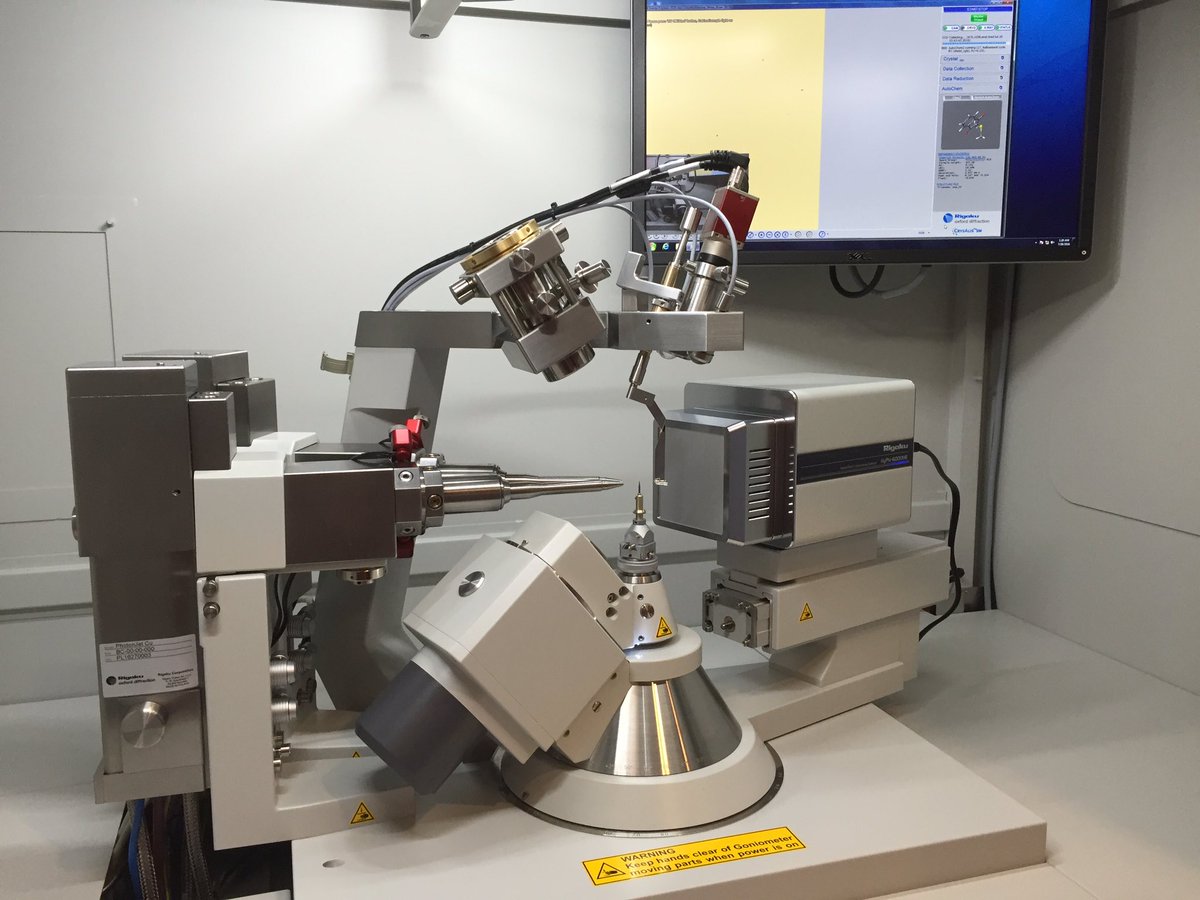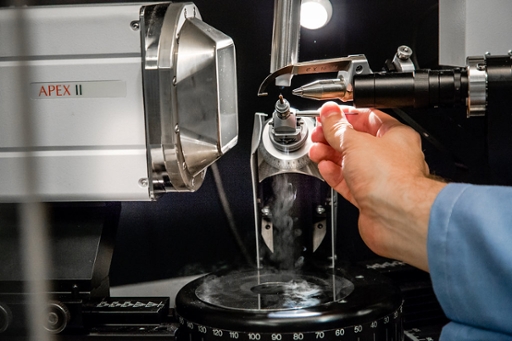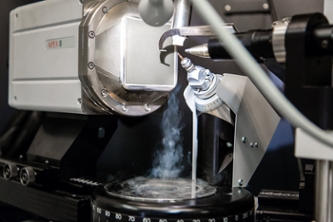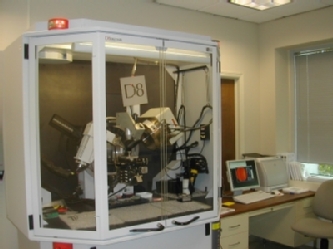Rigaku XtaLAB Synergy-S with HyPix-6000HE
The primary diffractometer is the Rigaku XtaLAB Synergy and includes dual (copper and molybdenum) PhotonJet sources equipped with multilayer optics and the HyPix-6000HE Hybrid Photon Counting (HPC) detector. The new technology of the microfocus source affords very strong, highly focused beam intensity with very low energy costs. The detector has near zero-readout noise and a very high dynamic range so that reflections with very high and very low count rates can be measured simultaneously. The data collection, reduction, and structure determination are often complete in under 1 minute.

Single crystal APEXII diffractometer with Mo and with Cu sources
 The Xray lab also has two single crystal Bruker APEX II CCD diffractometers. Poorly diffracting and various types of twinned crystals can also be examined successfully. A Kryoflex X-ray generator with a Mo sealed tube running routinely at 1.6 kW (45 kV, 35 mA) of power output provides the X-ray radiation. The samples are usually cooled to -163 ºC by an Oxford Cryostream improving the high angle diffraction and reducing thermal noise from the sample. However, the sample temperature may be varied between -173 ºC and 123 ºC. Thus desolvation processes and temperature dependent phase changes may be monitored during the diffraction experiment.
The Xray lab also has two single crystal Bruker APEX II CCD diffractometers. Poorly diffracting and various types of twinned crystals can also be examined successfully. A Kryoflex X-ray generator with a Mo sealed tube running routinely at 1.6 kW (45 kV, 35 mA) of power output provides the X-ray radiation. The samples are usually cooled to -163 ºC by an Oxford Cryostream improving the high angle diffraction and reducing thermal noise from the sample. However, the sample temperature may be varied between -173 ºC and 123 ºC. Thus desolvation processes and temperature dependent phase changes may be monitored during the diffraction experiment.
The Cu radiation provides a substantial increase (4-5 fold) in intensity for experiments on smaller crystals. The larger anomalous signal also allows the determination of absolute configuration ofchiral light atom molecules. The combination of the sensitive APEX II detector and strong source means that very small crystals can be examined and publishable structures obtained. A Kryoflex X-ray generator with a Cu sealed tube running routinely at 1.6 kW (40 kV, 40 mA) of power output provides the X-ray radiation.

D8 Discover powder X-ray diffractometer
 The D8 Discover is a multi-purpose powder diffractometer. The instrument has a centric Eularian cradle which provides four circles of sample rotation (theta, two theta, chi, and phi rotations), in addition to X, Y and Z sample translations. Göbel Parabolic Mirrors deliver a very high intensity beam cross section (high brilliance). A Kryoflex X-ray generator with a Co sealed tube running routinely at 1.4 kW (35 kV, 40 mA) of power output provides the X-ray radiation.
The D8 Discover is a multi-purpose powder diffractometer. The instrument has a centric Eularian cradle which provides four circles of sample rotation (theta, two theta, chi, and phi rotations), in addition to X, Y and Z sample translations. Göbel Parabolic Mirrors deliver a very high intensity beam cross section (high brilliance). A Kryoflex X-ray generator with a Co sealed tube running routinely at 1.4 kW (35 kV, 40 mA) of power output provides the X-ray radiation.


